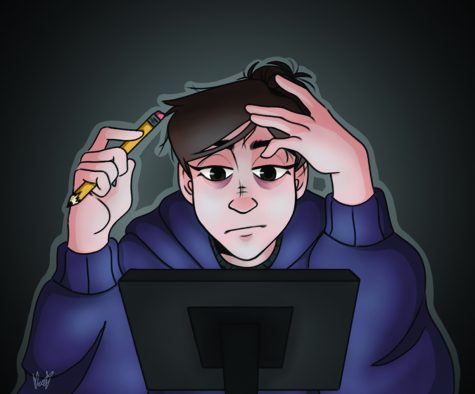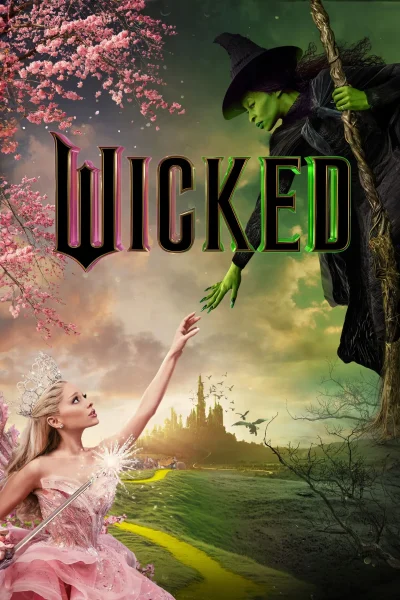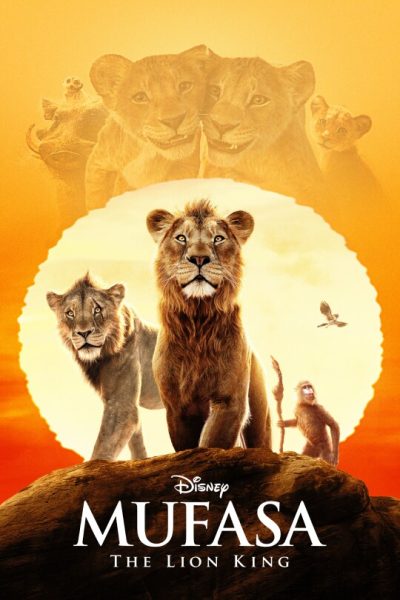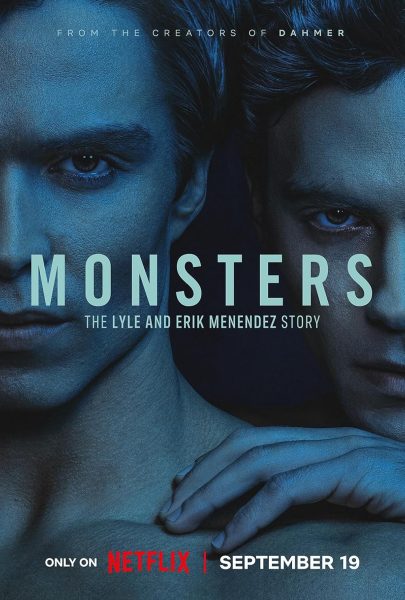Ghost of Tsushima cuts deep in a bland way
Ghost of Tsushima cover art.
Hype for this sword-swinging, war-filled, haiku simulator game could not be understated. Ghost of Tsushima excitement began Oct. 30, 2017, when Playstation released the official reveal trailer. This samurai game was developed by Sucker Punch and produced by Sony exclusively for the PS4. There have been ninja and samurai games in the past, but none quite to the scale and wonder of this one. Then when the excitement died off slowly, an official gameplay trailer released. Along with pre-order becoming an option for purchase. So with all this hype, how does Ghost of Tsushima compare?
The Ghost of Tsushima shaped up to be a beautiful game. It delivers excellent graphics on the PS4, even without the improved PS4 Pro. Its stylized Japanese landscape has colors that flood a player’s eyes with euphoria. The designers even added different graphic mode options, such as “Kurosawa mode.” This is a tribute to a famous samurai movie director. In this style, it is grayscale with film grading. Even with these graphic options, one can still run Ghost of Tsushima’s photo mode. It offers a plethora of choices, including but not limited to focus length, particle effect, time of day and weather. This has allowed many players to create their own unique portraits of their in-game characters. So what about this in-game character and story?
Unfortunately, Jin’s story can get bland because of inadequate complexity. Some people are all for a “classic samurai” character arc, but it becomes tiresome very quickly. When Jin is a cookie-cutter anti-hero a quarter through the game, it feels grating by the end. Jin is the corruption of an honorable samurai through painful losses and experiences. His transition to the Ghost isn’t engaging in the least. He loses a couple of times then just up and changes as if to say, “Well, guess I’ll throw out my entire morality system because of my experiences these last two days.” (SPOILER) Jin’s uncle gets kidnapped at the start of the game. Throughout the story, his uncle is supposed to represent the moral high ground in Jin’s descent into becoming the Ghost. But he and others come off as flat and one-dimensional.
Surprisingly, some of the best characters are the enemies or betrayers of Jin. First, there is Mongol leader Khotun Khan. He is a terrifying enemy because he loves Japanese culture and studied it thoroughly before his attempted conquest. To Japanese people of status, he offers rewards in exchange for information. He talks of peace if people will just give themselves to his cause. At one point (SPOILER), he has captured Jin and Yuna’s brother.
The Kahn tells Jin he respects his tactics because they are very similar to the Mongols’. He then says again to renounce Tsushima’s people. Jin says no, and the helpful Kenji is decapitated. This, depending on one’s connection to Kenji, can cause a fury. Even if a player isn’t playing for the story, Kenji had gifted Jin with a grappling hook earlier. So a useful piece of equipment and quest giver has been taken from anyone who is playing for optimization.
Another surprisingly fleshed-out character is Ryuzo. He leads a gang called the Straw Hats and is an old friend of Jin’s. Ryuzo turns on Jin after Jin can’t supply food to his crew. Ryuzo has deep-seated envy of Jin and reflects his rage of insecurity into repeated duels.
The khan uses Ryuzo against Jin many times. At one point, the Khan takes a bunch of farmers while trying to siege a castle. He uses them as hostages and Ryuzo ends up burning an innocent Japanese civilian for the Khan to prove his loyalty. He screams out in anguish, asking for the gates to open, so he doesn’t have to kill any more innocents. The final fight between Ryuzo and Jin is bittersweet. It’s easy to find oneself rooting for redemption in Ryuzo. (SPOILER) But it doesn’t come, as Jin swiftly executes him. This reveals how the Ghost persona is pulling him farther away from the samurai life.
Yuna is one of the most important side characters in the story. She created Jin’s persona and suffered along with him during her brother’s death. Though she is an amusing and enticing character during the first and second act, that tapers off, and it quickly becomes routine for her to say things everyone already knows: “We’re gonna kill the Khan,” or “Revenge for my brother,” or “Your uncle is a fool.” They are simply different flavors of the same thing.
The gameplay in Ghost of Tsushima is a fun ride at first, but quickly, like much of this game, it becomes routine monotony. The first time a person finds a fox shrine, it’s like magic. It’s so cool to think that a wild fox led the player to this hidden alcove that no one could’ve found. The fourth time it feels more like a simple transaction of goods for the charm that a player gets. A few side quests are interesting, such as when the Mongols attack a man and his family. He runs away cowardly, and Jin is sent to find the villager’s daughter and wife. But they don’t make it — the only thing left is a child’s doll. Jin scorns the man. The guy sulks and curses himself, finding no solace in anything. But the other 90% of the game is about going to kill bandits and rescue a person after a horrible tailing mission.
One thing does stand out about this game: The Mythic Tales are engaging. Hearing the epic legends foretold for years and finding out the truth in those stories is a lot of fun, particularly when all of them amount to a climactic duel that involves an ancient move that the player will carry on the legacy of. It’s very thrilling.
Fighting in Ghost of Tsushima feels like flowing in and around an enemy, making them regret the day they ever challenged the player. It is satisfying to use the counter and dodge mechanics. This also makes the goal of attaining skills in different trees worthwhile. The samurai gameplay is all good and gives a sense of improvement throughout the game while repeatedly challenging players with unique and new enemies.
But the problem with gameplay comes with the Ghost stealth aspect. This tree of skills and stealth play is underdeveloped. When the player goes into an enemy camp and stealths, it is clear that Sucker Punch did not make the A.I. correctly. When Jin is discovered, half the time, A.I. will stand awkwardly and just shout. Or they’ll see him when the player thinks that Jin is completely hidden. It can be frustrating or hilarious, depending on the general personal experience of the player. The only thing that is truly satisfying about this playstyle is the equipment. Smoke bombs, kunai and tanto assassinations provide truly cool moments, such as jumping from the rafters onto an unsuspecting enemy and taking advantage of a smoke bomb, taking the surprised enemies out, one by one. These are fantastic … when they work. The problem lies in the fact that it looks goofy when Jin clips through a horse while stabbing someone.
The Ghost of Tsushima wanes and waxes in enjoyability. Sometimes it’s a battle of blades, a dark hope, and the speaking of wise words. Other times it delivers a bug-filled, cookie-cutter, delivery of bland gameplay. It’s a disappointment when coming from a AAA developer studio such as Sucker Punch. But it’s still fun to play, and it should be recommended for a pure fighting-game experience, along with some eye candy, if that’s what a player is looking for.
The game is fun but an ultimately buggy experience. It has spice, but no commitment to cool ideas. It comes up with fun mechanics that aren’t polished enough to be memorable. It’s a gratifying game in the moment, but the player will forget about it in a couple of months. If a person just wants a fun and simple ride, with some simple enjoyable details, then play this game. All of these issues and great moments culminate to a 3/5 for Ghost of Tsushima.










